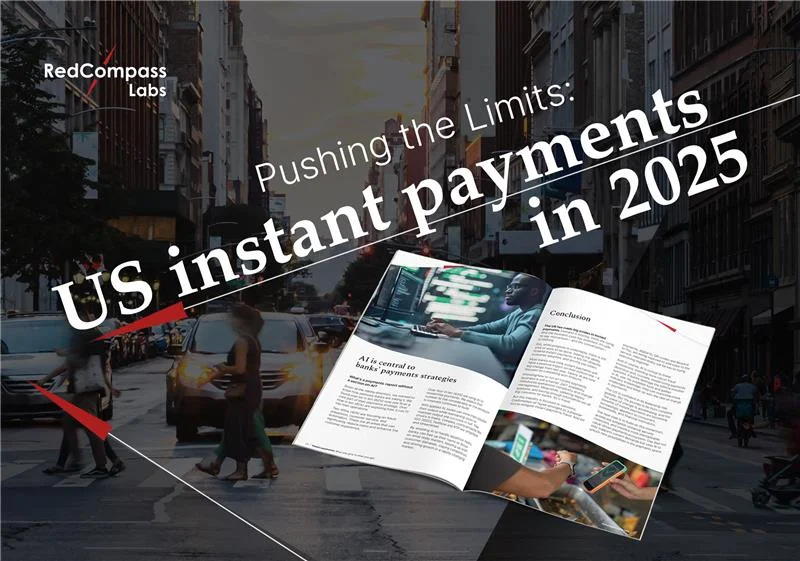TL;DR
- Stablecoins speed up payments. They cut costs and delays in cross-border transfers.
- Big banks back stablecoins. JP Morgan and others are building real use cases.
- Stablecoins may shape the future. They could power next-gen banking if adoption keeps pace.
Some of the world’s biggest banks and fintechs are getting involved with stablecoins.
Just this week, Mastercard announced it’s partnering with leading crypto platforms to enable wallet integration, card issuance, merchant acceptance, on-chain remittances, and stablecoin settlements.
Bank of America is reportedly exploring a stablecoin project (though nothing formal has been announced), while Standard Chartered is working to enhance digital payments using stablecoins. Fintechs like Revolut, PayPal, and Stripe are also jumping on board.
They join the likes of JP Morgan, which launched its dollar-backed stablecoin—now called Kinexys (formerly JPM Coin)—in 2019, and Circle, which introduced USDC back in 2018.
There’s been a flurry of news on the topic for weeks now. Stablecoins don’t seem to be going away.
So, even if you’re a skeptic, you might be left wondering: Are stablecoins worth considering?
Easy does it
Let’s start with the problem stablecoins could solve. Over $250 trillion will be sent across borders by 2027—an increase of $100 trillion in just 10 years. Yet sending money overseas is still slow, expensive, and error-prone.
There are multiple parties (i.e., correspondent banks – which are decreasing in number), currencies, laws, and time zones. So, traditional overseas transfers often involve high fees and long settlement times (sometimes several days to complete).
But stablecoins could help. Instead of navigating complex rails, rules, and infrastructure across currencies and regions, you can buy, sell, or swap a stablecoin on apps like PayPal or Coinbase to pay for goods and services. This cuts through the spaghetti junction of the centralized banking system.
That makes stablecoins faster, smoother, and more affordable than traditional cross-border payments. With no intermediaries, they’re easier to send across borders (in theory). They’re also somewhat anonymous (which is good if you value privacy and great if you commit crimes).
A steady hand
Tether (USDT), the world’s largest stablecoin, launched in 2016. Six years later, it claimed to have processed $18.2 trillion in transactions—more than double Visa’s $7.7 trillion the very same year. Granted, most of that volume came from clearing crypto trades. And while it still represents a small slice of the $194 trillion that moves across borders, its growth is remarkable.
Stablecoins also work at the local level. In countries facing hyperinflation or currency instability, they offer a more reliable store of value and medium of exchange. In Argentina and Venezuela, for example, where inflation has eroded trust in local currencies, people increasingly turn to stablecoins like USDC or Tether (USDT) to protect savings and make cross-border transactions.
Similarly, in regions with limited banking infrastructure, stablecoins could offer a lifeline for financial inclusion. In Sub-Saharan Africa, where a large portion of the population is unbanked, stablecoins could be integrated into mobile money platforms like M-Pesa or Airtel Money, offering cheaper and faster ways to pay.
This creates an opportunity for fintechs. For instance, companies like Stellar and Celo are already leveraging stablecoins to build cross-border payment networks in emerging markets. By offering cheaper, faster, and more accessible financial services, stablecoin-powered fintechs could challenge the dominance of major players like Western Union and MoneyGram, especially in remittances and peer-to-peer payments.
Not everyone is on board
So, it all sounds promising. But reports suggest stablecoins still face big scaling issues. That includes liquidity challenges in less-traded currencies and concerns over compliance with international regulations.
Some argue that stablecoins haven’t significantly replaced traditional payments or made a dent in cross-border transactions.
Meanwhile, SWIFT gpi and newer instant settlement models are already making cross-border payments faster, without crypto volatility, regulatory headaches, or counterparty risks. And the most successful digital payments infrastructure still runs on fiat.
Stablecoin’s pseudo-anonymous nature and lack of consistent oversight have made them a conduit for money laundering and sanctions evasion, further slowing regulatory approval.
So, the real challenge may not be technological—it could be trust.
Banks need stability, compliance, and real-world utility to get on board. As a result, stablecoins have remained in regulatory limbo, with lingering questions over reserves, security, and systemic risk.
Even big banks are moving cautiously. JP Morgan’s Kinexys is still limited to internal institutional use. That could be a sign that even the largest players are hesitant, despite their resources.
A glimmer of hope
To address these concerns, regulators in regions like the EU and US are exploring ways to boost adoption. For instance, in the EU, the Markets in Crypto-Assets Regulation (MiCA) mandates that stablecoin issuers hold 1:1 fiat reserves and comply with stringent anti-money laundering (AML) and counter-terrorism financing (CTF). This aims to reduce the risk of money laundering and enhance consumer protection.
In the US, regulators are pursuing similar oversight. The New York Department of Financial Services (NYDFS) has introduced guidelines for stablecoin reserves, requiring issuers like Paxos and Circle to maintain fully-backed reserves and undergo monthly attestations. Meanwhile, the proposed Clarity for Payment Stablecoins Act would require issuers to meet bank-like regulations, including AML and CTF compliance.
The challenge remains ensuring that stablecoins align with existing AML and CTF regulations. For instance:
- Tether (USDT) has faced scrutiny over its compliance practices, with regulators raising concerns about potential use in illicit finance.
- In 2023, the US Department of Justice investigated Binance for allegedly allowing stablecoins to facilitate money laundering by failing to properly monitor suspicious transactions.
- In 2024, the UK’s Financial Conduct Authority (FCA) introduced rules mandating AML checks for all crypto firms, including stablecoin issuers, to combat terrorism financing risks.
But, the tide does seem to be turning.
Political support
The current US administration is actively backing stablecoins, viewing them as a tool to extend the dollar’s dominance in the digital economy. In January 2025, President Trump signed an executive order promoting the development of lawful, dollar-backed stablecoins globally. The administration argues that stablecoins could bolster the dollar’s influence in cross-border trade by making it the de facto currency for digital payments.
David Sacks, Trump’s newly appointed crypto czar, has positioned stablecoins as a strategic priority, aiming to establish the US as the global leader in digital assets. The administration is pushing for clear regulations that encourage stablecoin innovation, which could drive mainstream adoption.
This renewed political support is already impacting the market. Bank of America is reportedly exploring stablecoin applications, and several US fintechs are accelerating their stablecoin strategies, hoping to capitalize on the friendlier regulatory environment.
Regional competition
Meanwhile, other regions—such as the EU—are responding to the Trump administration’s push for a US dollar-backed stablecoin by accelerating their own plans. The EU’s Digital Euro pilot is an attempt to retain currency sovereignty. If other governments start favoring central bank digital currencies (CBDCs), stablecoins could face significant headwinds in terms of effective adoption.
Whether stablecoins become some kind of merger of bank money and settlement methods used primarily as technology to move money faster (a throwback to the days of banks issuing their own notes), or whether independent stablecoins like Tether will truly challenge the world of SWIFT and cross-border payments, may depend on how fast regulator-driven regions like Europe can respond to the loosening of regulation in market-driven areas like the US and Asia.
So, are stablecoins worth considering?
Stablecoins haven’t upended global finance yet. But that doesn’t mean they won’t.
Perhaps stablecoins are like AI or the internet. The technology exists for years. Early adopters experiment, and then, suddenly, it reaches a tipping point and becomes an overnight success.
As cross-border commerce grows and digital infrastructure evolves, the case for faster, programmable, blockchain-based money becomes stronger. Whether stablecoins become the backbone of next-gen banking or remain a niche fintech tool will depend on how fast regulators, banks, and consumers adapt.
So, are they worth considering?
The answer might just be yes.
Share this post
Written by

Divya Tak
Senior Business Analyst, RedCompass Labs
Resources






